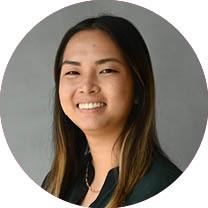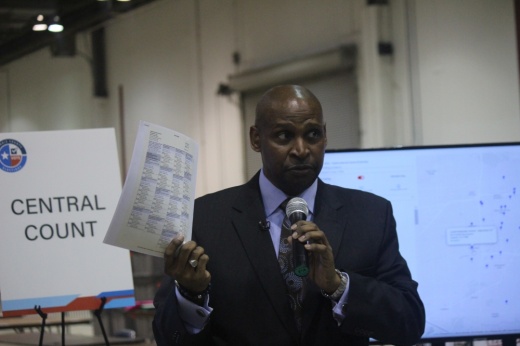In this interview with Community Impact, Tatum details changes his office has made to shore up the elections process and encourages voters to vote early. This interview has been edited for length and clarity.
What is your background and experience, and why did you want to take on this role?
I started in elections probably about 16-plus years ago with the Georgia Secretary of State as an enforcement attorney and then as the legal adviser to the Secretary of State and the Elections Division. From there, I worked as an elections consultant for the District of Columbia Board of Elections under the Help America Vote Act, a legislative package helping different jurisdictions implement ... procedures and requirements. And then from there at some point, I became the elections director of the D.C. Board of Elections, eventually went on to become the general counsel for the [U.S.] Election Assistance Commission and then back to the [D.C.] board as the chief information security officer.
And then this position presented itself. Becoming the elections administrator for one of the largest counties in the nation is always a challenge and an inspiring opportunity, so it seemed like the right thing to do. Fortunately, I was chosen for the position.
Why is the role of an elections administrator necessary? How is it different from the old way of running elections, which involved the county clerk and the tax assessor-collector?
Combining your elections process from the county clerk and the tax assessor[-collector] into a single entity's function allows for greater accountability in the overall elections process. [Before], the clerk was responsible for actually conducting the election and the tax assessor[-collector] was responsible for conducting voter registration and then sharing that data with the clerk. So by removing those functions from those offices and creating a single office, then those two functions now are performed by a single entity that then allows for greater transparency into the preparation and to the processes of the elections and actually into post-election activities themselves.
What has your office done to address issues identified in the March elections?
There are a number of processes and procedures that we put into place to ensure that we're accounting for all of the election documents and equipment that's coming back from each of the judges' locations. We've implemented a process to streamline that return of equipment and election results on election night itself. We've revised the training curriculum to provide the judges with more hands-on opportunities to touch the machines and set up the machines to get a better feel of what's required for them pre-election, election day and then election night. And we sort of streamlined the documents a little bit so that they will be more clear cut for the judges to follow. I think all of those sorts of things lend themselves to a better experience for the voters on election day and for the judges to do the things that we're asking them to do.
What is your office doing to address restrictions put in place from Senate Bill 1?
Education. We have education coordinators out in the community on a daily basis sharing information on what a voter needs to know or should know about the voting process ... [and] attending community organization events [and] Commissioners Court events. [When] any of our stakeholders that are holding educational-type rallies, we're attending those and taking the machines out into the community as well so that voters can put their hands on the machines and experience what the process actually looks like so that they are prepared when they show up to vote during early voting or on Election Day.
What is the timeline like on Election Day, and when should voters expect to see results?
The polling place will close at 7 p.m., assuming that there's no one standing in line to vote. If there's someone standing in line, then the judge keeps the polling location open until the last person that was standing in line at 7 p.m. is able to cast a ballot. And then the judge will take roughly about an hour or so to wrap up their paperwork and prepare the equipment to be transported to NRG [Arena], which is where the central count will take place.
We know that the longest drive will be roughly 45 minutes to an hour from some of the farthest corners of the county. Once those results are returned to the NRG location, then each of the judges—as they send back the different components, those components are accounted for at several different stations throughout the NRG platform. And there's time associated to how long it takes a worker to account for each of the different components, and then to identify that the V-Drives [thumb drives that store voting records] and that the correct machine components have been returned so that we can then move into the tabulation process.
So once we go through those checks and balances in the tabulation process itself, we've identified that it will take approximately up to one minute per V-Drive to be read into the tabulators. And with the understanding that there's 782 voting locations, that will likely present itself to be 782, up to maybe 800 V-Drives that will need to be counted on election night. The math itself suggests that if you're doing two V-Drives per minute, which is what we propose to do, that we're still looking at roughly 400 minutes to process all of the V-Drives ... or roughly six hours or so.
... Let's say we start our tabulation at 8:30 p.m. from all of the voting centers—in six hours, this puts us easily at [2 a.m.]. We would not anticipate providing any final preliminary results before midnight just because the math doesn't lend itself for that.
How will you address the possibility of human error throughout the election process?
It's the redundancy and balances on each of those processes. Voters should be aware as each particular component of the materials are returned back to the central count location, we're scanning each of those items into multiple checkpoints. If the first checkpoint captures all of the items and the second checkpoint does not, we're going to see that the second checkpoint didn't capture all of the items. So there's a built-in process that allows us to ensure that every section is doing its part. And then as the tabulation is read, the central count board will actually be involved in reviewing the tabulation results themselves before they're published to the website and to the public just to make sure that the numbers are adding up properly. So there's a bit of sanity check involved in all these processes, as most election jurisdictions will do, just to ensure that the numbers are what the numbers are supposed to be.
Why is your office advocating for voters to vote early?
Because it's one of the longest ballots in the state and the nation, we know that some of our voters are going to not be as prepared as others as they come to the polling location. So it may take them a bit more time to vote the ballot than others. So if you start the voting process early, then there's a likelihood that you won't have to endure a line, [where]as if you waited for the last day where you have hundreds of voters who might show up at the last hour ... there's going to be a line. So the best practice for our voters would be to vote early so that you don't have to endure the lines on the last day of election day.
Is there anything else you would like to add?
We want to encourage our voters to take the necessary steps to educate themselves about who the candidates are so that when they show up at the polling location or when they receive their ballot at home, that they are able to move through the elections process in an efficient manner. Voters should know that they can go to our website and access a sample ballot that is specific to their address so that they can see exactly who their candidates are and make their selections and actually print those off onto a paper and take those documents into a polling location with them so that they can refer to them as they're voting. Voters should know that they can't use their cell phone to look at that list. ... Be prepared to know that it is the longest ballot in the state, and it's likely going to take them roughly three to five minutes—for some voters a little longer—to work their way through the ballot to cast it at the end of the voting process.





